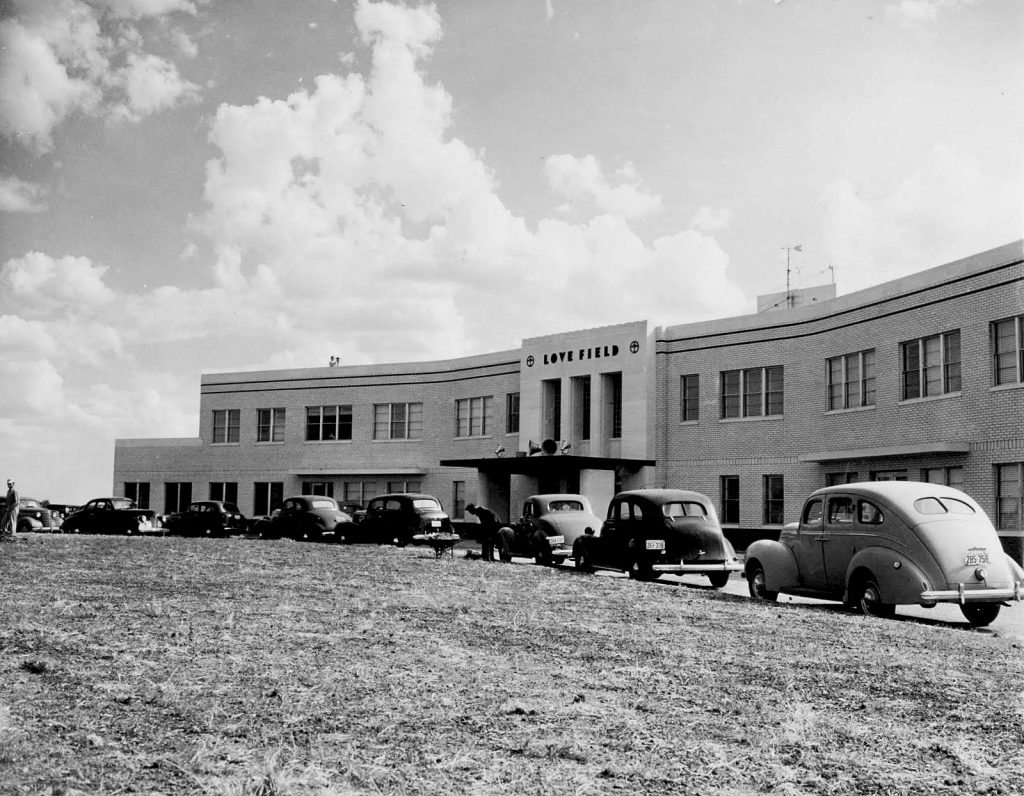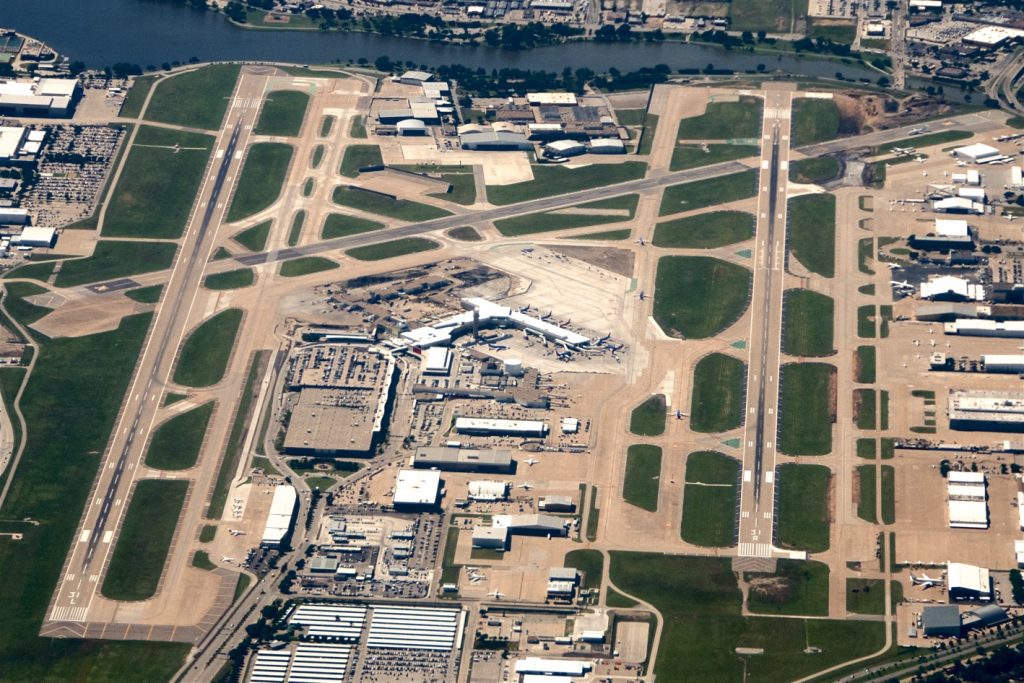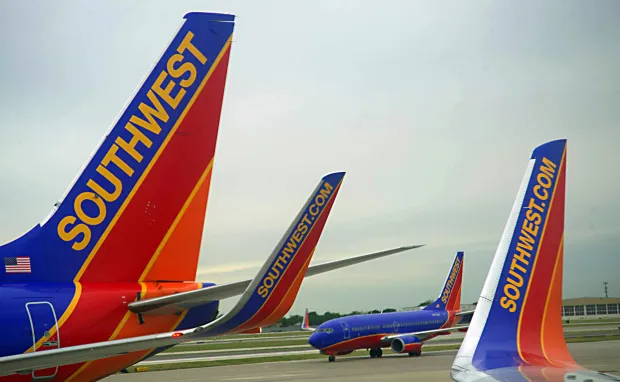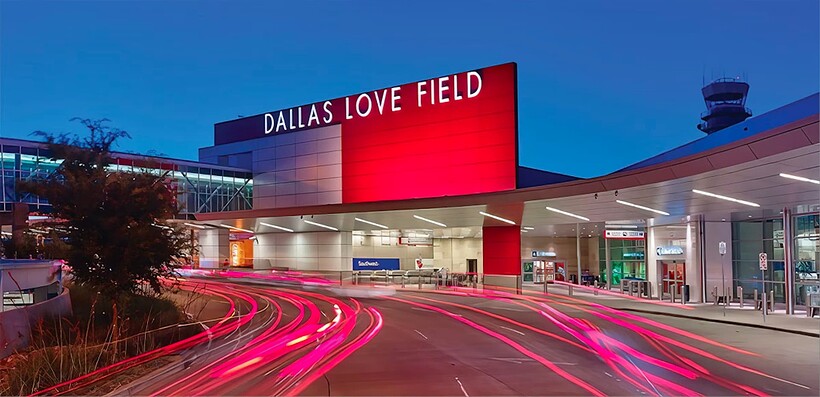Located within the city of Dallas, Texas, Dallas Love Field is not merely an airport; it’s history tells much about the evolution of aviation within the United States – a history that includes asbestos. Like all commercial buildings built from the 1950s to the 1980s, asbestos construction materials were utilized during renovations and additions of Love Field during the twentieth century. This article will explore the types of asbestos products once used at Love Field in addition to a general history of this now vital airport.
From its humble inception as a World War I military training base to its current status as an indispensable transportation hub, each chapter of Love Field’s history is imbued with innovation, unwavering resolve, and historical significance.
Early Beginnings

A Military Training Base
The genesis of Dallas Love Field can be traced back to the tumultuous era of World War I. In the year 1917, this expanse of land was commissioned as a military training base for the preparation of aviators for combat duty under the United States Army Air Service’s aegis. This initial role of the field underscored the nation’s burgeoning commitment to the nascent field of aviation.
The Birth of Love Field
In the year 1927, Love Field underwent a metamorphosis, transitioning from a military installation to a municipal airport. It was in this juncture of history that the airport name was christened, paying homage to Army Lieutenant Moss L. Love, a military pilot who died during the war.
Love Field during World War II
The crucible of World War II witnessed Love Field ascending to a significant profile, serving as an indispensable military airfield. It played host to the Army Air Corps and the Air Transport Command, emerging as a nurturing crucible for pilots and maintenance crews alike.
At the end of the war, Love Field experienced a period of profound transformation and expansion. The post-war years bore witness to a comprehensive program of renovations and modernization, primarily driven to accommodate the burgeoning demand for commercial air travel. These sweeping changes set the stage for Love Field’s gradual transformation into a major commercial airport.
Commercial Aviation Takes Flight
The 1950s and 1960s ushered in a new epoch for commercial aviation at Love Field. Airlines such as Braniff International Airways and Texas International Airlines chose Love Field as their operational base, propelling the airport into the spotlight. In turn, the surge in passenger traffic during this period catalyzed robust economic growth for the city of Dallas.
The Rise of Braniff International
Braniff International Airways, in particular, emerged as an iconic symbol of Love Field’s ascendancy. The airline introduced pioneering services and meticulously crafted a distinctive corporate identity. The intertwining of Braniff International’s legacy with that of Love Field itself forged a timeless mark on the airport’s identity.
Challenges and Changes

As the jet age dawned, Love Field found itself at a crossroads, beset with both formidable challenges and unparalleled opportunities. The airport had to adapt expeditiously to accommodate larger, faster aircraft. This necessitated substantial runway expansions and terminal renovations, culminating in a period characterized by adaptation and innovation as Love Field endeavored to meet the ever-evolving demands of the aviation landscape.
The Wright Amendment
In the year 1979, Love Field encountered a significant regulatory impediment in the form of the Wright Amendment. This legislative framework imposed stringent restrictions on long-haul flights departing from Love Field. The overarching objective was to stimulate the growth of the nearby Dallas/Fort Worth International Airport. The implications of the Wright Amendment prompted a reassessment of Love Field’s route network and its long-term strategies.
Modernization and Expansion
In pursuit of elevating the passenger experience to unparalleled heights, Love Field embarked on a series of meticulous terminal renovations. These endeavors culminated in the establishment of state-of-the-art facilities, replete with an array of passenger-centric amenities. Love Field’s aspiration was not solely to meet but to exceed the expectations of the modern traveler.
Asbestos at Love Field
Asbestos was a ubiquitous ingredient in thousands of construction products during the 1950’s, 60’s and 70’s. Accordingly, expansions and additions that occurred at Love Field during the second half of the twentieth century also involved asbestos. Drywall joint compounds in terminal spaces, fireproofed steel beams and structures, vinyl asbestos floor tile are all examples of the kinds of asbestos containing construction materials used at the airport during those decades.
Aircraft also used asbestos component parts during the mid twentieth century. Many aircraft features brake pads and wing structures to exhaust manifolds and engines often contained asbestos during this time period
Finally, areas of the airport where maintenance occurred as well as power plant and/or boiler plants at the airport would have also contained asbestos pipe covering, boilers and fireproofing in addition to asbestos containing products that may have been used in the repair and maintenance of aircraft.
In conjunction with numerous expansions and renovations, asbestos abatement programs also occurred at the airport in recent decades. Modern construction materials used in rennovations and expansions during the twenty-first century do not contain asbestos.
Southwest Airlines’ Dominance
By the early 1970’s, Southwest Airlines emerged as a formidable harbinger of change within Love Field, fundamentally reshaping the airport’s identity as a bastion of low-cost carriers. The airline’s visionary approach and unwavering commitment to providing cost-effective air travel played a pivotal role in the propulsive growth of Love Field as a major player within the realm of aviation.

JFK’s Final Moments
Of course, Dallas Love Field also found itself indelibly linked to the annals of history on the fateful day of November 22, 1963. It was at this very airport that President John F. Kennedy arrived just hours before his tragic assassination in Dallas. Images of President Kennedy and the first lady greeting Texans at the airport and loading into the presidential limousine are etched into our memories. The airport played a pivotal role in a moment that reverberated through the collective memory of the United States.
Love Field Today
In the contemporary era, Dallas Love Field stands not only as a monument to its historical grandeur but as a dynamic entity that continues to fulfill its role as a vital gateway to the city. With the Wright Amendment now phased out, Love Field connects travelers to diverse destinations across the United States, its iconic stature ensuring its place within the hearts of Dallas residents and aviation enthusiasts alike.
Flight at Love Field and its impact on the city of Dallas is a narrative still in the making, with fresh chapters inscribed daily as Love Field grapples with the challenges and opportunities presented by the modern aviation landscape.

